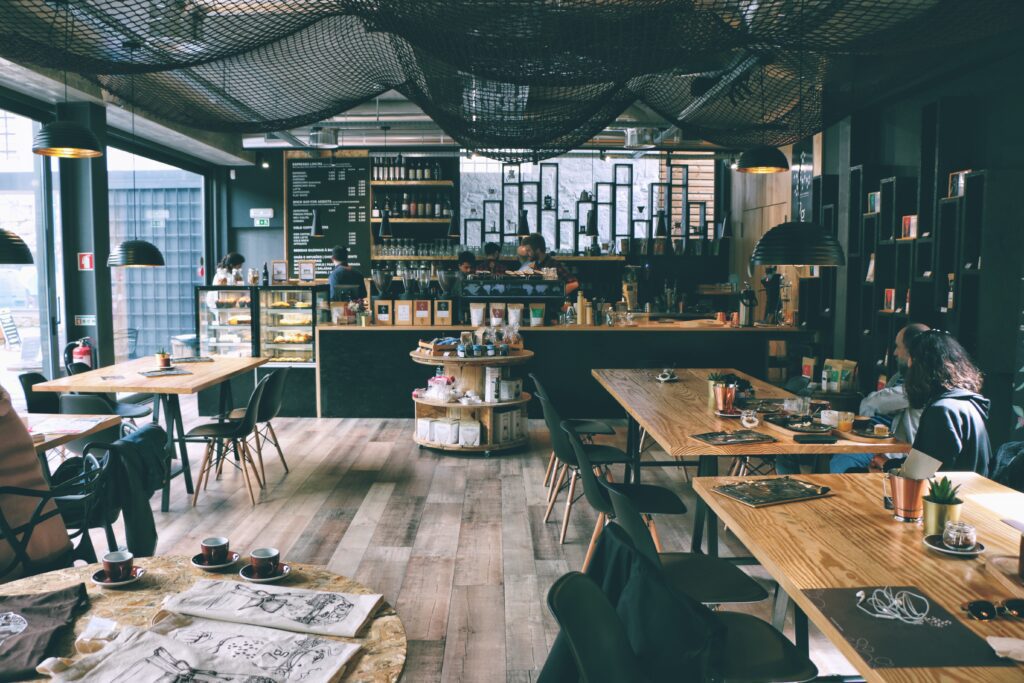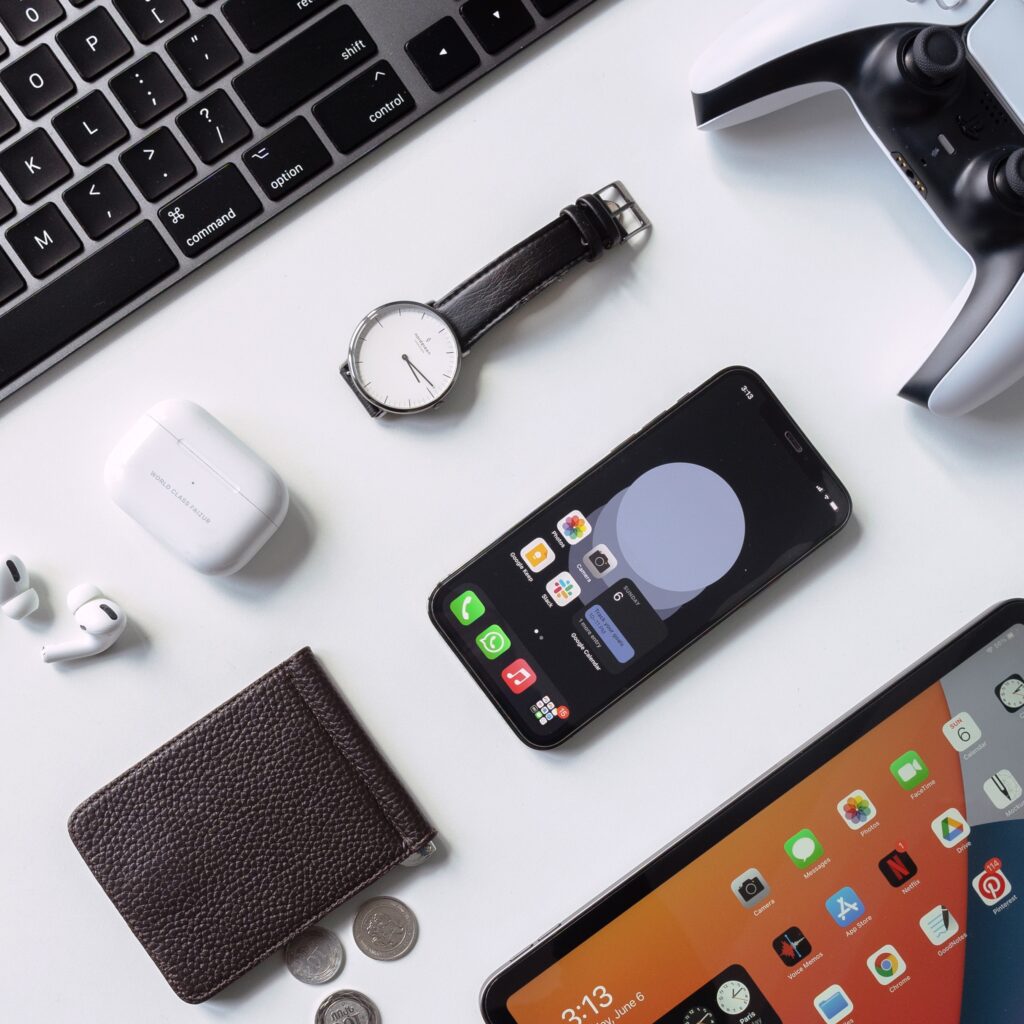
Are you tired of settling for mediocre coffee every morning? If so, it’s time to take matters into your own hands and invest in a coffee grinder. But with countless options available, how do you choose the right one for your needs? In this article, we will guide you through the process of selecting the perfect coffee grinder to enhance your daily brew. From considering factors like grind consistency and adjustable settings to evaluating your budget and preferred brewing method, we’ve got you covered. Get ready to enjoy a superior cup of coffee each day with the right grinder by your side.

This image is property of images.unsplash.com.
Factors to Consider when Choosing a Coffee Grinder
When it comes to choosing a coffee grinder, there are several factors that you should consider to ensure you make the right decision. These factors include your budget, the grind settings, the grind size consistency, whether you want an electric or manual grinder, and the size and capacity of the grinder.
Budget
Your budget is an essential factor to consider when shopping for a coffee grinder. Coffee grinders can range in price from affordable options to high-end models. Before making a purchase, it is crucial to determine how much you are willing to spend. Keep in mind that while more expensive grinders often offer more features and higher quality grinding, there are still excellent budget options available that can provide satisfactory results.
Grind Settings
Grind settings refer to the various options a coffee grinder offers for adjusting the coarseness of the grounds. Whether you prefer a coarse grind for a French press or a fine grind for an espresso machine, having multiple grind settings can greatly enhance your brewing experience. Look for coffee grinders that offer a wide range of grind settings to accommodate different brewing methods.
Grind Size Consistency
Consistency in grind size is crucial for achieving the perfect cup of coffee. Inconsistent grinding can result in uneven extraction, leading to a lackluster taste. When choosing a coffee grinder, opt for one that is known for its grind size consistency. This will ensure that each coffee particle is of the same size, resulting in a uniform extraction and a more flavorful cup of coffee.
Electric or Manual
Deciding between an electric or manual coffee grinder depends on your personal preference and lifestyle. Electric grinders are convenient and efficient, as they do the work for you at the push of a button. On the other hand, manual grinders offer a more hands-on approach, allowing you to have complete control over the grinding process. Consider factors such as convenience, speed, and the level of control you desire when choosing between an electric or manual grinder.
Size and Capacity
The size and capacity of a coffee grinder also play a significant role in your decision-making process. Consider the available space in your kitchen or coffee setup and ensure that the grinder can fit comfortably in the designated area. Additionally, think about the amount of coffee you typically brew at once. If you frequently entertain or have a large household, a grinder with a larger capacity may be ideal. However, if you only brew for yourself or a small group, a compact grinder with a smaller capacity may suffice.
Types of Coffee Grinders
Before diving into the specific factors and features of coffee grinders, it is essential to understand the different types available on the market. The three main types of coffee grinders are blade grinders, burr grinders, and hand grinders. Each type has its own set of advantages and disadvantages, so it is crucial to consider your preferences and needs when making a decision.
Blade Grinders
Blade grinders are the most basic type of coffee grinder. These grinders use spinning blades to chop the coffee beans into small pieces. While blade grinders are generally more affordable, they are also known to produce uneven grinds due to the inconsistent nature of the chopping process. This inconsistency can impact the flavor of your coffee and result in an underwhelming brewing experience.
Burr Grinders
Burr grinders are considered to be the superior option when it comes to grinding coffee beans. These grinders use two rotating burrs, one fixed and one adjustable, to crush the beans into a consistent grind size. Burr grinders offer precise control over the coarseness of the grind, resulting in better flavor extraction and a more enjoyable cup of coffee.
Hand Grinders
If you prefer a more traditional and hands-on approach to grinding coffee beans, hand grinders are worth considering. These manual grinders require you to manually rotate a handle to crush the coffee beans. While hand grinders may require a bit more effort, they offer excellent grind consistency and are often more affordable than electric burr grinders. Hand grinders are also portable, making them a popular choice for coffee enthusiasts on the go.
Blade Grinders: Pros and Cons
Pros
Blade grinders have a few advantages that make them appealing to some coffee enthusiasts. First and foremost, they are generally more affordable compared to burr grinders. If you are on a tight budget or new to the world of coffee grinding, a blade grinder can be a cost-effective option. Additionally, blade grinders are often compact and take up minimal counter space, which is perfect for those with limited kitchen space.
Cons
Despite their affordability and compact size, blade grinders do have significant drawbacks. The most prominent drawback is the lack of grind size consistency. Due to the chopping action of the blades, the resulting grind can be uneven, leading to an inconsistent extraction and subpar flavor in your coffee. Blade grinders also tend to generate more heat during the grinding process, which can potentially affect the taste of the coffee.
Burr Grinders: Pros and Cons
Pros
Burr grinders are widely regarded as the superior choice for coffee grinding. They offer several advantages that contribute to a better overall brewing experience. First and foremost, burr grinders provide excellent grind size consistency. The adjustable burrs allow you to precisely control the coarseness of the grind, ensuring a consistent flavor extraction. This consistency leads to a more flavorful and enjoyable cup of coffee. Additionally, burr grinders generate less heat during the grinding process, preventing any adverse effect on the coffee’s taste.
Cons
Despite their numerous advantages, burr grinders also have a couple of downsides to consider. One significant drawback is the price. Burr grinders are generally more expensive compared to blade grinders due to their superior construction and grind consistency. Additionally, burr grinders tend to be larger in size, occupying more counter space in your kitchen. If you have a limited budget or a small kitchen, the cost and size of a burr grinder may be a deterrent.

This image is property of images.unsplash.com.
Hand Grinders: Pros and Cons
Pros
Hand grinders offer a unique experience for coffee enthusiasts seeking a more traditional approach to grinding. One of the main advantages of hand grinders is their portability. They are compact and lightweight, making them perfect for traveling or outdoor activities. Additionally, hand grinders are generally more affordable than electric burr grinders, making them an attractive option for those on a budget. Hand grinders also allow you to have complete control over the grinding process, allowing for a more customized brewing experience.
Cons
While hand grinders have their perks, they also come with some drawbacks. One notable drawback is the physical effort required to grind the coffee beans manually. Grinding a sufficient amount of coffee can be time-consuming and tiring, especially if you are brewing for a larger group. Additionally, hand grinders may not provide the same level of grind size consistency as electric burr grinders. However, many high-quality hand grinders can still produce excellent results, so this may not be a significant concern for everyone.
Different Grind Settings and their Uses
When looking for a coffee grinder, it is beneficial to consider the different grind settings available and how they correspond to various brewing methods. While each person’s preference may vary, understanding the general grind sizes and their uses can guide you in selecting the right grinder for your needs.
Coarse Grind
A coarse grind is characterized by larger particles and is typically used for brewing methods that require longer extraction times. French press and cold brew are popular brewing methods that benefit from a coarse grind. The larger particles allow for a slower extraction, resulting in a full-bodied and well-rounded flavor.
Medium Grind
A medium grind is a versatile option that works well with a range of brewing methods. It is commonly used for drip coffee machines or pour-over methods like the Hario V60. The medium grind strikes a balance between extraction time and flavor, producing a well-balanced cup of coffee.
Fine Grind
A fine grind consists of smaller particles and is often associated with espresso brewing. The fine grind allows for a faster extraction, creating a concentrated and intense flavor in a short amount of time. Additionally, a fine grind is also suitable for certain manual brewing methods such as AeroPress or Moka pot.

This image is property of images.unsplash.com.
Choosing the Right Grind Size
Choosing the right grind size is crucial to optimize the extraction and flavor of your coffee. Different brewing methods require different grind sizes to achieve the desired taste. Understanding the grind size recommendations for popular brewing methods will help you make an informed decision when selecting a coffee grinder.
Drip Coffee
For drip coffee machines, a medium grind is generally recommended. This grind size allows for a balanced extraction, resulting in a flavorful cup of coffee. The particles should be similar in size to granulated sugar.
Espresso
Espresso requires a fine grind size to maximize the extraction and concentrate the flavor. The particles should resemble fine sand or powdered sugar. It is important to note that achieving the perfect espresso grind size can be challenging, and investing in a high-quality grinder with precise grind adjustments is essential for the best results.
French Press
French press brewing requires a coarse grind to allow for a longer extraction time. The particles should be similar in size to coarse sea salt. The coarser grind ensures that the coffee does not become over-extracted and produces a rich and full-bodied cup of coffee.
Additional Features to Consider
Aside from the essential factors mentioned above, there are also additional features that you may want to consider when choosing a coffee grinder. These features can enhance your grinding experience and make your daily coffee routine more convenient.
Grind Timer
Having a built-in grind timer can be a useful feature for those who want precise control over the grinding time. This allows you to consistently grind the desired amount of coffee without any guesswork.
Bean Hopper Capacity
The bean hopper capacity refers to the amount of coffee beans the grinder can hold at once. If you frequently brew multiple cups of coffee or have a larger household, opting for a grinder with a larger bean hopper capacity can save you time and ensure you have enough coffee beans on hand to meet your needs.
Easy Cleaning
Cleaning a coffee grinder can be a tedious task, so choosing one that offers easy cleaning features can greatly simplify the process. Look for grinders with removable parts or easily accessible grinding chambers that are simple to clean.
Noise Level
Coffee grinders can be noisy, especially electric ones. If you prefer a quieter grinding experience, consider looking for grinders specifically designed to minimize noise. Some manufacturers offer noise reduction features or enclosures to reduce the noise level during operation.
Built-in Scale
Some high-end coffee grinders come with a built-in scale, allowing you to measure the precise amount of coffee beans needed for each brewing method. This feature eliminates the need for a separate scale, streamlining your coffee preparation process.
Common Mistakes to Avoid when Choosing a Coffee Grinder
When in the market for a coffee grinder, it is essential to be aware of common mistakes to avoid. By avoiding these pitfalls, you can ensure that you choose a grinder that best suits your needs and provides a satisfying coffee-brewing experience.
Choosing Based on Price Alone
While budget is an important consideration, solely relying on price when choosing a coffee grinder can lead to disappointment. Cheaper blade grinders may seem appealing due to their affordability, but they often lack in grind size consistency and overall quality. Investing in a slightly more expensive burr grinder can significantly improve the flavor and quality of your coffee.
Ignoring Grind Size Consistency
Grind size consistency is a crucial factor in achieving a balanced extraction and flavorful coffee. Ignoring this aspect when choosing a grinder can result in over-extraction or under-extraction, leading to lackluster taste. Prioritizing a grinder known for its grind size consistency is vital to elevate your coffee brewing experience.
Not Considering Space and Storage
It is important to consider the available space in your kitchen or coffee setup when selecting a coffee grinder. Some grinders may be larger and take up more counter space, while others are more compact and portable. Assess your storage capabilities and choose a grinder that fits comfortably within your designated space.
Conclusion
Choosing the right coffee grinder is an important decision that can greatly impact the quality and taste of your coffee. By considering factors such as your budget, grind settings, grind size consistency, electric or manual operation, and size and capacity, you can make an informed choice that suits your specific needs.
Whether you opt for a blade grinder, burr grinder, or hand grinder, each type has its own advantages and disadvantages. Blade grinders may be more affordable, but they lack grind size consistency. Burr grinders offer precise control and consistency but come at a higher price point. Hand grinders provide a traditional and portable option but require manual effort.
Understanding the different grind settings and their uses is essential to tailor your brewing method and achieve the desired flavor. Consider factors such as drip coffee, espresso, and French press to determine the appropriate grind size for your preferred brewing style.
Lastly, additional features such as a grind timer, bean hopper capacity, easy cleaning, noise level, and a built-in scale can enhance your overall coffee grinding experience.
By avoiding common mistakes such as choosing based solely on price, ignoring grind size consistency, and not considering space and storage, you can select a coffee grinder that meets your expectations and elevates your coffee brewing journey. Happy grinding!






